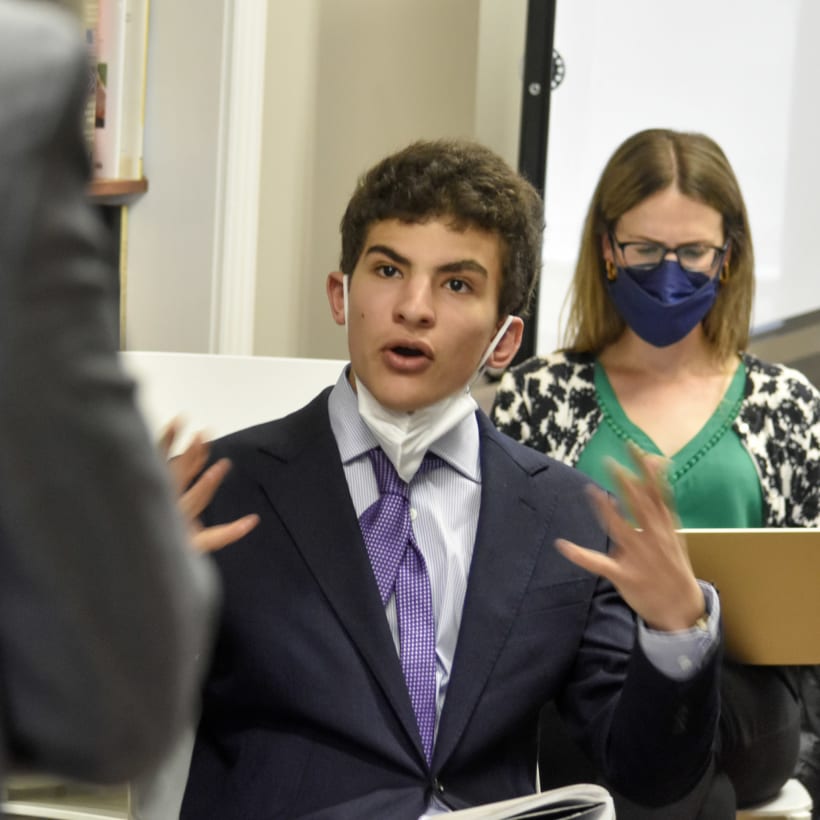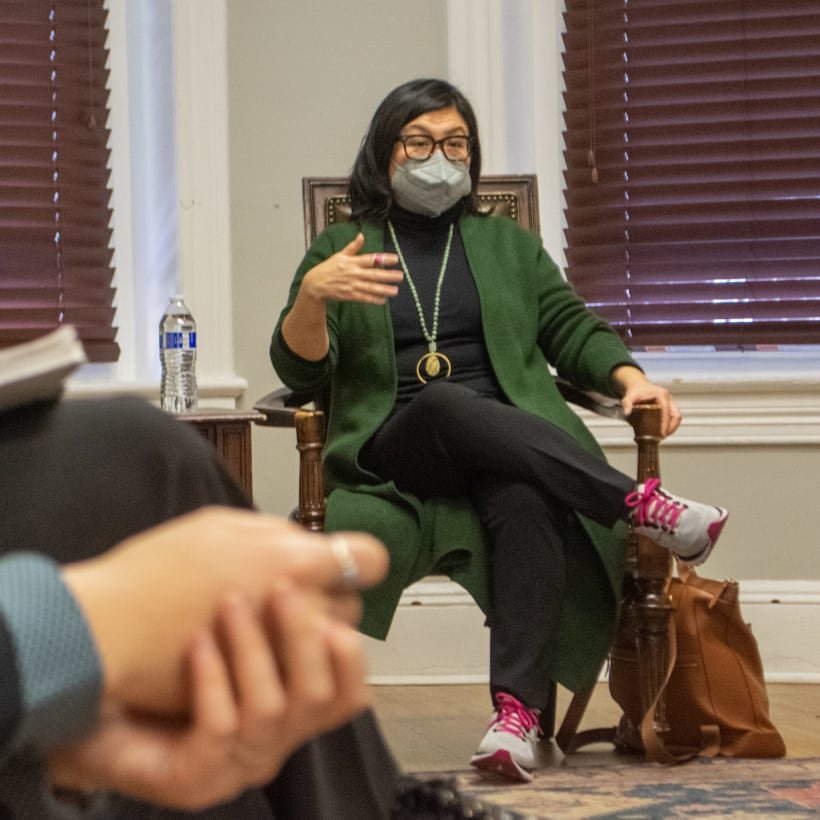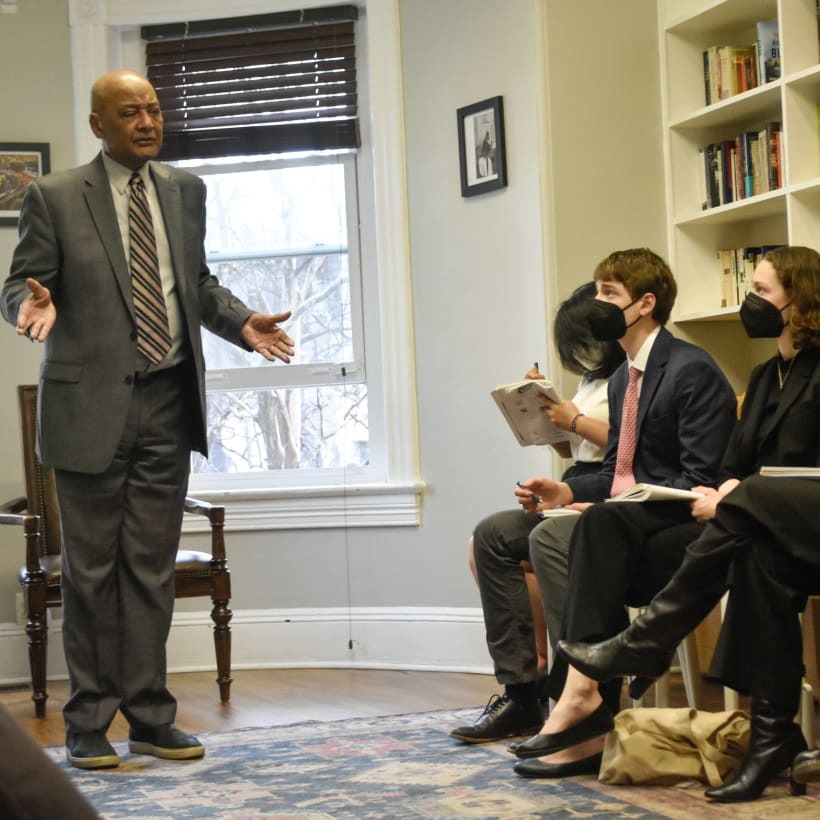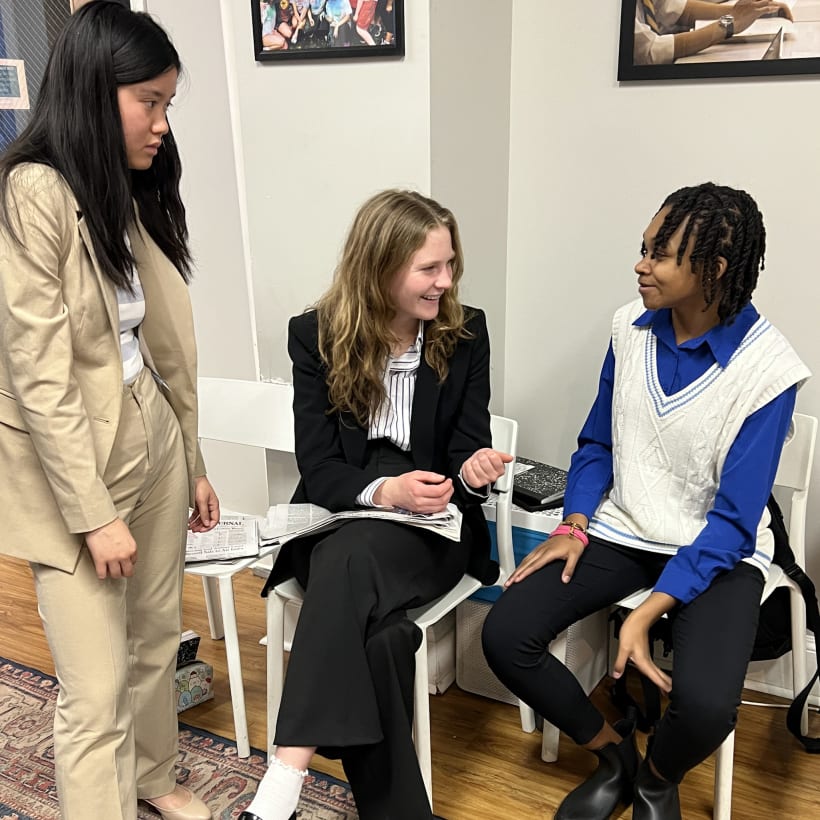Teaching Race at SEGL
Critical Race Theory
Underneath the politics and posturing, the debate over Critical Race Theory challenges teachers and schools to ask: What is the best way to teach race in our classrooms?
At SEGL, we want our students to answer this question. We believe this is the best way for them to become independent learners and critical thinkers.
How do we prepare them to answer such a challenging question?
In our DC classroom, we start with a spectrum activity. This frequent SEGL teaching tool asks our 24 students to align themselves on an imaginary spectrum depending on their answers to challenging prompts:
“My sending school does a good job teaching about race.” (Most disagree with this nowadays.)
“When having difficult conversations about race, does intent or impact matter more?” (Ten years ago, most students prized intent. Today’s students focus much more on impact.)
“Which statement is more true? White people will never really understand race if they just listen to each other or It is not the obligation of people of color to educate white people about race.” (This flummoxes many students. Many want to say that both are true.)
“I feel comfortable discussing race with my peers.” (Most have had upsetting experiences discussing race at their home school.)
These prompts, and the short conversation that each provokes, help underscore two key concepts: first, that each student is entering this case study with a unique point of view. At SEGL, it is OK–even exciting–to start a conversation believing something different than your peers. Second, hearing different points of view, shared in good faith, promotes both intellectual and interpersonal growth. It is also essential for leadership.

Then students break into small groups that rotate through three faculty-facilitated discussion stations. At each station they watch videos featuring strongly-held viewpoints on the subject: an interview with CRT co-founder Kimberlé Crenshaw, a panel featuring CRT opponent Robert Woodson, and a discussion between Daily Show Host Trevor Noah and U.S. Representative Dan Crenshaw (R-TX).
Throughout this phase of learning, we encourage students to see (to take in information without judgment) before they think (making judgements about what they see). (This is part of our STAR critical thinking model, which you can read more about here.) Withholding hasty judgment is challenging, especially these days, but it is a crucial critical thinking and leadership skill. It is also good practice for the next phase of our case study: engaging effectively with renowned experts on different sides of the issue.
Our first expert was Jin Hee Lee, Director of Strategic Initiatives at the NAACP Legal Defense Fund (LDF). Lee directs the LDF’s Pro Truth Initiative, which “protect[s] the truth of the United States’ history of racial subjugation and its ongoing impact on present-day, systemic inequalities, especially as taught in K-12 and post-secondary public education,” and supervises the LDF’s Justice in Public Safety Project, which “aims to address entrenched racial biases within law enforcement and to reimagine public safety.”

She offered students a robust pro-CRT perspective and took many well-informed questions from students. What is her definition of Critical Race Theory? What are her thoughts on the Students for Fair Admissions v. Harvard lawsuit and affirmative action? What inspired her into this field? The conversation was collegial and impressive. Afterwards, students shared with each other their takeaways from the session: what did they see and hear? What did they think about what they saw and heard? How might they act in the next speaker session as a result?
Several days later, we met with Robert Woodson, a civil rights icon, MacArthur “Genius” Fellow, and founder of the Woodson Center. Woodson also organized a group of scholars in opposition to The New York Times’ 1619 Project called “1776 Unites.” He countered Lee’s views on CRT, and fielded questions on faith, race, opportunity, and censorship. After meeting with Dr. Woodson, students again discussed what they saw, heard, and thought. Many found his presentation challenging: they disagreed with his overall position but found many of his points compelling. His words helped bring out the complexities of a subject that they hadn’t previously considered from all angles.

They also made an important observation: many of their home schools would not have invited a speaker like Dr. Woodson; put simply, he would not have been well-received. At the same time, they agreed that his viewpoint was essential to their own learning: even those students who strongly disagreed with his message were glad they had heard him speak.
Unlike many communities wrestling with Critical Race Theory these days, our student cohort didn’t fracture or crumble under the pressure of this case study. Like each generation of SEGL students before them, they worked hard, cultivating intellectual curiosity and interpersonal grace.

“I feel like I’d never really known what the debate around CRT was all about,” said one student in a debrief, “And now I want to do more reading and learning about it.” Her words capture an important reality in all of our case studies: students don’t leave with ironclad conclusions. They leave with a sense of wonder, a commitment to complexity, a stronger relationship with each of their peers, and a list of better questions.
Perhaps they are also developing their own answer to a question that has challenged American leaders for centuries.